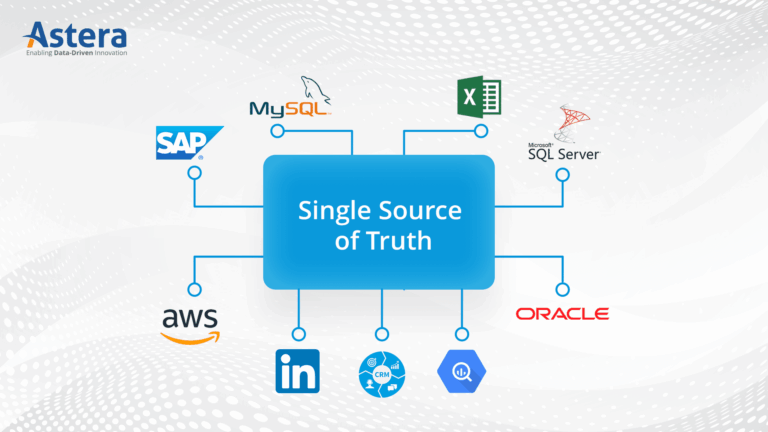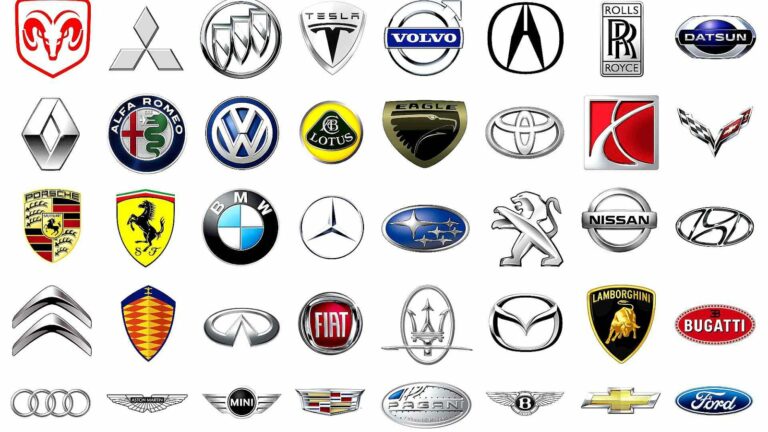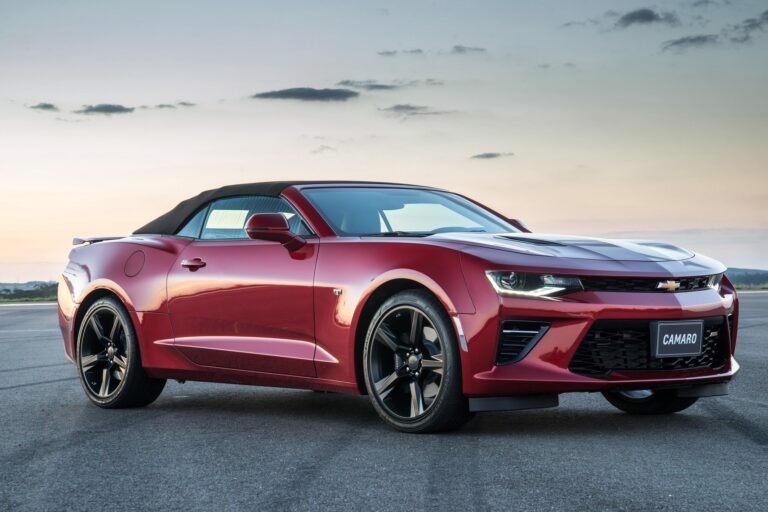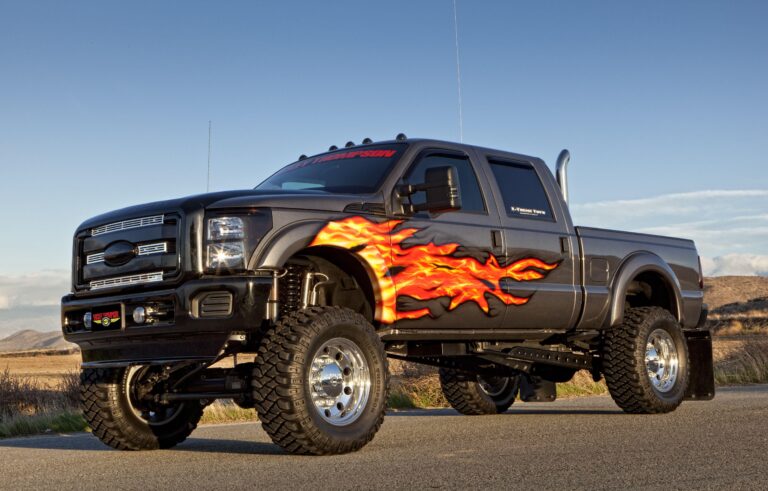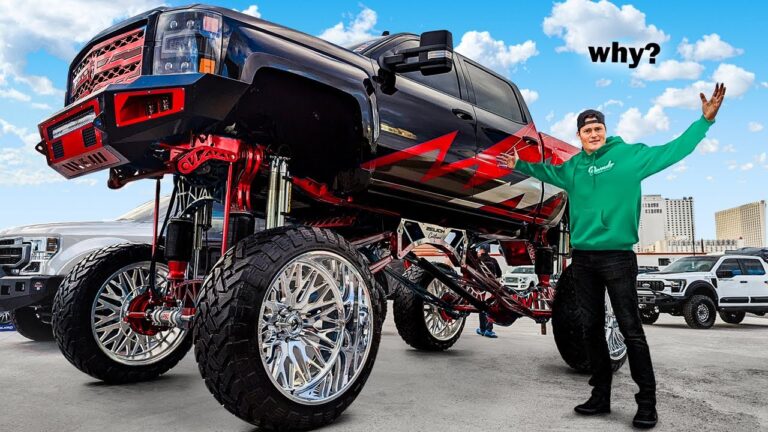Biggest Trucks For Sale: A Comprehensive Buyer’s Guide
Biggest Trucks For Sale: A Comprehensive Buyer’s Guide cars.truckstrend.com
Introduction: The Giants of the Road and Beyond
When we talk about "biggest trucks for sale," we’re not just referring to consumer-grade heavy-duty pickups. We’re stepping into the realm of colossal machines designed for monumental tasks: hauling immense loads across continents, moving mountains of earth, lifting multi-ton structures, and performing specialized industrial operations. These are the workhorses of the global economy – the semi-trucks, dump trucks, mining haulers, cranes, and heavy-haul prime movers that form the backbone of logistics, construction, mining, agriculture, and various other heavy industries.
Biggest Trucks For Sale: A Comprehensive Buyer’s Guide
For businesses, contractors, or even specialized individuals looking to expand their fleet or acquire a formidable asset, navigating the market for these behemoths can be a complex yet rewarding endeavor. This comprehensive guide will delve into the diverse world of biggest trucks for sale, offering insights into their types, key considerations for purchase, where to find them, and essential tips for making an informed decision. Whether you’re a seasoned fleet manager or considering your first major industrial vehicle acquisition, understanding this specialized market is crucial for success.
What Defines a "Biggest Truck"? More Than Just Size
While their sheer physical presence is undeniable, the definition of a "biggest truck" extends far beyond just dimensions. It encompasses their remarkable capabilities, specialized engineering, and the immense loads they are designed to handle. Key metrics that define these giants include:
- Gross Vehicle Weight Rating (GVWR): The maximum operating weight of a vehicle as specified by the manufacturer, including the vehicle’s chassis, body, engine, fuel, accessories, driver, passengers, and cargo. For the biggest trucks, this can range from 33,001 lbs (Class 8) to hundreds of thousands of pounds for off-highway vehicles.
- Gross Combined Weight Rating (GCWR): The maximum allowable weight of the entire combination of a power unit (truck) and its attached trailers, including the load. This is critical for semi-trucks and heavy haulers.
- Payload Capacity: The maximum weight of cargo a truck can carry.
- Towing Capacity: The maximum weight a truck can tow.
- Engine Displacement & Power: Measured in horsepower (HP) and torque (lb-ft), these engines are engineered for sustained heavy-duty performance, often consuming significant fuel.
- Specialized Features: Power Take-Off (PTO) systems for operating auxiliary equipment, reinforced frames, multi-axle configurations, heavy-duty suspensions, and advanced braking systems.

These attributes set them apart from everyday vehicles, placing them in categories like Class 8 (the heaviest classification for on-highway vehicles) or specialized off-highway classifications.
The Diverse World of Biggest Trucks For Sale

The market for biggest trucks is incredibly varied, catering to a multitude of specialized applications. Here are the primary categories you’ll encounter:
1. Class 8 Semi-Trucks (Tractors)
These are the quintessential "big rigs" you see on highways, designed to pull heavy trailers.
- Types:
/close-up-of-spider-on-hand-699166199-5b42059bc9e77c0037034a69.jpg)
- Over-the-Road (OTR) / Sleeper Cabs: Equipped with sleeping quarters for long-haul drivers. Examples: Freightliner Cascadia, Kenworth T680, Peterbilt 579, Volvo VNL.
- Day Cabs: Shorter, without sleeping quarters, used for regional hauling or local deliveries where drivers return home daily.
- Vocational Chassis: Adapted for specific tasks like logging, refuse collection, or heavy equipment transport.
- Applications: Long-haul freight, regional distribution, intermodal transport, heavy-haul operations (with specialized trailers).
2. Heavy-Duty Vocational Trucks
These trucks are built on heavy-duty chassis and equipped with specialized bodies and equipment for specific tasks.
- Dump Trucks: Used for transporting loose materials like sand, gravel, and demolition debris. Available in tandem, tri-axle, and quad-axle configurations for increased payload. Brands: Mack Granite, Western Star 4900, Kenworth T880, Peterbilt 567.
- Concrete Mixers: Carry and mix concrete in transit.
- Refuse Trucks: Garbage collection vehicles.
- Service Trucks/Utility Trucks: Equipped with cranes, tool compartments, and specialized equipment for field service.
- Tow Trucks (Rotators/Heavy Wreckers): Capable of recovering and towing other heavy-duty vehicles.
3. Off-Highway Mining and Construction Trucks
These are the true giants, often too large for public roads and used exclusively on private sites like mines and large construction projects.
- Mining Haul Trucks: Enormous rigid-frame trucks designed to transport hundreds of tons of ore or overburden. Examples: Caterpillar 797 series, Komatsu 980E series, Liebherr T 282C. These are the largest land vehicles in the world.
- Articulated Dump Trucks (ADTs): Flexible, all-wheel-drive dump trucks ideal for rough, uneven terrain. Examples: Volvo A60H, Caterpillar 745.
- Wheel Loaders and Excavators: While not "trucks" in the traditional sense, these heavy machines are often sold alongside the biggest trucks and are essential for loading them.
4. Specialized Heavy-Lift & Transport Vehicles
This category includes highly specialized equipment for extraordinary tasks.
- Mobile Cranes: Self-propelled cranes capable of lifting massive weights.
- Heavy-Haul Prime Movers: Extremely powerful tractors designed to pull multi-axle trailers carrying super-heavy or oversized loads like wind turbine blades, transformers, or industrial modules.
Key Considerations When Buying a Biggest Truck
Acquiring a biggest truck is a significant investment, demanding careful planning and research.
1. Purpose and Application
This is paramount. What specific tasks will the truck perform?
- Long-haul vs. local?
- Heavy-haul vs. standard freight?
- On-road vs. off-road?
- Specific materials to be transported (e.g., loose aggregates, liquids, specialized cargo)?
The application dictates the necessary engine power, axle configuration, transmission type, frame strength, and specialized attachments.
2. New vs. Used
- New Trucks: Offer the latest technology, better fuel efficiency (often), full warranties, and customization options. However, they come with a higher upfront cost and immediate depreciation.
- Used Trucks: Significantly lower initial cost, potentially faster ROI. The downside can be higher maintenance needs, no warranty (or limited), older technology, and unknown operational history. A thorough pre-purchase inspection is vital.
3. Specifications and Features
- Engine: Horsepower (HP) and torque are crucial for performance. Consider emissions standards (e.g., EPA compliance) based on your operating region.
- Transmission: Manual, Automated Manual Transmission (AMT), or fully automatic. AMTs are increasingly popular for ease of use and fuel efficiency.
- Axle Configuration: Tandem, tri-axle, lift axles, all-wheel drive – each affects payload, traction, and maneuverability.
- GVWR/GCWR: Ensure the truck’s ratings meet or exceed your anticipated load requirements.
- Braking Systems: Air brakes are standard on most heavy trucks. Ensure ABS (Anti-lock Braking System) and advanced safety features.
- Suspension: Air ride for comfort and cargo protection, or spring/walking beam for heavy-duty vocational applications.
- PTO (Power Take-Off): Essential for dump bodies, mixers, cranes, and other hydraulic attachments.
- Fuel Efficiency: While secondary to power for these trucks, optimizing fuel consumption is critical for operating costs.
4. Maintenance and Operating Costs
These trucks are expensive to run. Factor in:
- Fuel: A major ongoing expense.
- Tires: Large, specialized tires are costly and wear quickly under heavy loads.
- Parts & Labor: Specialized components and skilled technicians lead to higher repair costs.
- Insurance: Heavy truck insurance is a significant overhead.
- Depreciation: Especially for new vehicles.
5. Regulatory Compliance and Licensing
Operating heavy trucks requires strict adherence to regulations:
- DOT (Department of Transportation) Regulations: Hours of Service, maintenance, safety inspections.
- Emissions Standards: Varies by region and year of manufacture.
- Weight Limits: State and federal weight limits for axles and gross vehicle weight.
- CDL (Commercial Driver’s License): Required for drivers.
- Permits: Oversize/overweight permits for specialized loads.
6. Financing Options
Explore various avenues:
- Traditional Bank Loans: Often require strong credit and a substantial down payment.
- Equipment Leasing: Can offer lower monthly payments and tax advantages, but you don’t own the asset at the end.
- Manufacturer Financing: Many truck manufacturers offer their own financing programs.
- SBA Loans: Small Business Administration loans can be an option for qualifying businesses.
Where to Find Biggest Trucks For Sale
The market for these specialized vehicles is global and multifaceted.
1. Dealerships (New and Used)
- Authorized Brand Dealerships: For new trucks (e.g., Freightliner, Kenworth, Volvo, Mack, Peterbilt, Caterpillar, Komatsu). They offer warranties, parts, and service networks.
- Independent Used Truck Dealers: Specialize in a variety of makes and models, often offering a wider selection and competitive pricing.
2. Online Marketplaces
These platforms are invaluable for browsing a vast inventory.
- Commercial Truck-Specific Sites: TruckPaper.com, CommercialTruckTrader.com, MyLittleSalesman.com.
- Heavy Equipment Marketplaces: Ritchie Bros. Auctioneers (RBA), IronPlanet, MachineryTrader.com, EquipmentTrader.com. These often include mining and construction giants.
- General Classifieds: eBay Motors, Craigslist (for smaller, local options, but exercise extreme caution).
3. Auctions (Live and Online)
- Public Auctions: Government surplus, repossessions, company liquidations. Often a good place to find deals, but "as-is, where-is" conditions apply.
- Specialized Heavy Equipment Auctions: Ritchie Bros., IronPlanet, often feature large-scale mining and construction equipment.
- Dealer Auctions: Sometimes dealers will offload trade-ins through private auctions.
4. Brokerages and Consultants
For highly specialized or rare equipment, a broker with industry connections can help source the right truck and negotiate on your behalf.
5. Direct from Owners
Some smaller companies or owner-operators may sell their trucks directly. This can sometimes yield a good deal, but requires more due diligence from the buyer.
Tips for a Successful Purchase
- Conduct a Thorough Pre-Purchase Inspection (PPI): For used trucks, this is non-negotiable. Hire an independent, qualified heavy truck mechanic to inspect the engine, transmission, frame, axles, brakes, suspension, and all critical systems. Check for rust, fluid leaks, and signs of accident damage.
- Review Maintenance Records: Ask for detailed service history. A well-maintained truck, even with high mileage, can be a better buy than a lower-mileage truck with neglected maintenance.
- Test Drive Extensively: Drive the truck under various conditions, ideally with a load if applicable. Listen for unusual noises, check braking, steering, and transmission shifts. Test all auxiliary functions.
- Understand Warranty Options: For new trucks, understand the manufacturer’s warranty. For used, inquire about extended warranties offered by dealers or third parties.
- Negotiate Smartly: Don’t be afraid to haggle. Research market prices for similar trucks to inform your offer.
- Factor in After-Sales Support: Consider the availability of parts and a reliable service network for the chosen make and model, especially if you operate in remote areas.
Challenges and Solutions in the Biggest Truck Market
- High Upfront Cost: Solution: Explore diverse financing options, consider well-maintained used trucks, or lease agreements.
- Maintenance Complexity: Solution: Establish a robust in-house maintenance program or partner with reputable heavy truck service centers. Invest in diagnostic tools.
- Fuel Efficiency Concerns: Solution: Implement driver training for efficient driving techniques, consider aerodynamic add-ons, and explore newer models with improved engine technology.
- Regulatory Compliance: Solution: Stay informed through industry associations, government websites, and consult with legal or compliance experts if needed. Invest in ELD (Electronic Logging Device) systems.
- Specialized Driver Shortage: Solution: Offer competitive compensation and benefits, invest in driver training and retention programs.
Price Table: Estimated Costs for Biggest Trucks For Sale (USD)
| Truck Type | Typical Application | New Price Range (USD) | Used Price Range (USD) | Key Price Influencers |
|---|---|---|---|---|
| Class 8 Semi-Truck (Sleeper) | Long-haul freight, general cargo | $150,000 – $250,000+ | $30,000 – $150,000+ | Mileage, Year, Engine, Transmission, Condition, Specs |
| Class 8 Semi-Truck (Day Cab) | Regional hauling, intermodal, local delivery | $120,000 – $200,000+ | $25,000 – $100,000+ | Mileage, Year, Engine, Condition |
| Heavy-Duty Dump Truck | Construction, aggregate transport, demolition | $180,000 – $350,000+ | $40,000 – $200,000+ | Axle Config., Body Type, Engine, Condition, PTO |
| Concrete Mixer Truck | Concrete delivery | $200,000 – $400,000+ | $50,000 – $250,000+ | Drum Size, Chassis Specs, Condition |
| Heavy Wrecker/Rotator | Vehicle recovery, heavy equipment towing | $350,000 – $800,000+ | $100,000 – $500,000+ | Boom Capacity, Chassis, Winch Power, Condition |
| Articulated Dump Truck (ADT) | Off-road earthmoving, mining, large construction | $400,000 – $800,000+ | $150,000 – $500,000+ | Payload Capacity, Engine, Hours, Condition, Tire Wear |
| Mining Haul Truck (Rigid) | Large-scale mining (ore, overburden) | $5,000,000 – $10,000,000+ | $1,000,000 – $6,000,000+ | Payload Capacity, Engine, Hours, Condition, Components |
| Large Mobile Crane | Heavy lifting, construction, industrial projects | $1,000,000 – $15,000,000+ | $300,000 – $8,000,000+ | Lift Capacity, Boom Length, Axle Config., Hours |
Note: Prices are highly variable and depend on factors such as year, mileage/hours, engine size, transmission type, specific features, overall condition, location, and market demand. These are rough estimates for general guidance.
Frequently Asked Questions (FAQ)
Q1: What is the primary difference between GVWR and GCWR?
A1: GVWR (Gross Vehicle Weight Rating) refers to the maximum operating weight of a single vehicle (e.g., a straight truck or a semi-tractor by itself), including its own weight and payload. GCWR (Gross Combined Weight Rating) refers to the maximum allowable weight of a combination of vehicles, such as a semi-tractor and its loaded trailer.
Q2: How often do these biggest trucks typically need maintenance?
A2: Maintenance schedules vary by manufacturer, model, and application. However, heavy trucks typically require preventative maintenance every 10,000 to 25,000 miles or every 250 to 500 operating hours, including oil changes, filter replacements, and general inspections. Major services occur at longer intervals. Off-highway equipment might have maintenance based purely on hours.
Q3: Can I finance a used heavy truck?
A3: Yes, absolutely. Many banks, credit unions, and specialized equipment financing companies offer loans and leases for used heavy trucks. The terms (interest rates, down payment, loan duration) will depend on the truck’s age, condition, your creditworthiness, and the lender’s policies.
Q4: What permits do I need to operate a heavy truck?
A4: Besides a Commercial Driver’s License (CDL) for the operator, you’ll need various permits depending on your operation:
- IFTA (International Fuel Tax Agreement) Decal: For interstate fuel tax reporting.
- IRP (International Registration Plan) Plates: For apportioned registration across multiple states/provinces.
- UCR (Unified Carrier Registration): For interstate motor carriers.
- DOT Numbers & MC Numbers: For interstate commercial operations.
- Oversize/Overweight Permits: Required when transporting loads exceeding standard dimensions or weight limits, varying by state.
Q5: What is a "vocational truck"?
A5: A vocational truck is a heavy-duty truck specifically configured and equipped for a particular trade or "vocation" rather than general freight hauling. Examples include dump trucks, concrete mixers, refuse trucks, tow trucks, utility trucks, and fire trucks. They often have a heavy-duty chassis, specialized bodies, and a Power Take-Off (PTO) system to run auxiliary equipment.
Q6: Are electric heavy trucks available for sale?
A6: Yes, the market for electric heavy trucks is growing rapidly, though they are currently more prevalent in Class 8 semi-trucks for regional hauling and vocational applications (e.g., refuse trucks). Brands like Tesla (Semi), Volvo (VNR Electric), Freightliner (eCascadia), and Nikola are developing and selling electric models. Their range and charging infrastructure are still developing, making them most suitable for specific routes and depot-based operations.
Q7: What is the typical lifespan of a heavy truck?
A7: With proper maintenance, a Class 8 heavy truck can last anywhere from 750,000 miles to well over 1.5 million miles. For off-highway mining trucks, lifespan is typically measured in operating hours, often reaching 50,000 to 100,000+ hours. The engine, transmission, and frame are key components that contribute to longevity.
Conclusion: Driving Your Business Forward with the Right Giant
The acquisition of a biggest truck is more than just a purchase; it’s a strategic investment in the capabilities and future of your business. From the long-haul prowess of a Class 8 semi-truck to the earth-moving might of a mining hauler, these vehicles are indispensable tools that underpin global commerce and infrastructure development.
Navigating the market requires a keen understanding of your specific needs, diligent research into new and used options, a thorough assessment of specifications, and meticulous attention to pre-purchase inspections and regulatory compliance. By leveraging the insights and practical advice provided in this guide, you can confidently approach the "biggest trucks for sale" market, ensuring you secure the right giant to drive your operations forward effectively and profitably.

